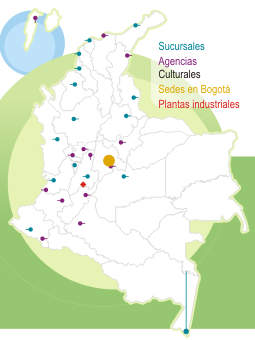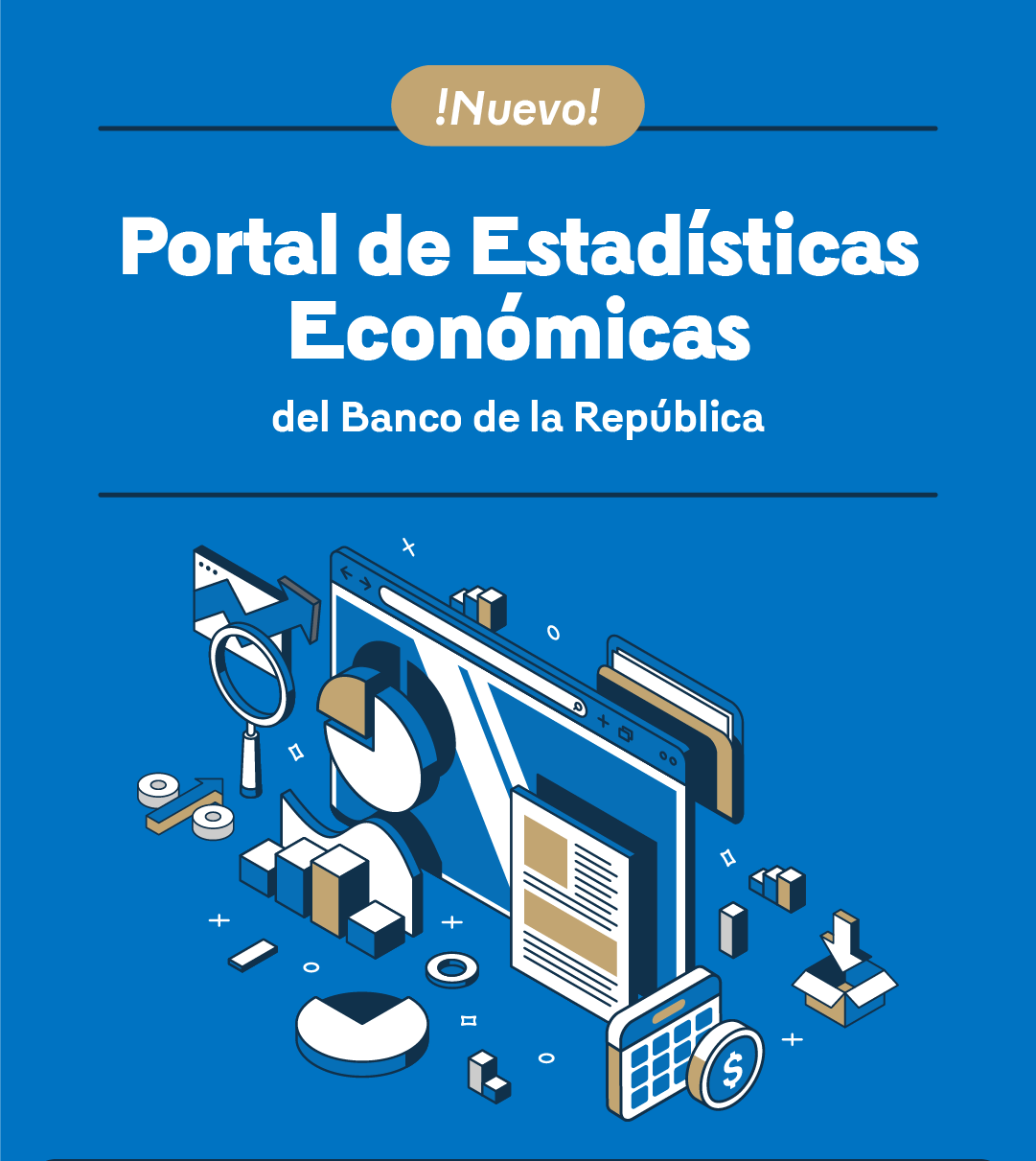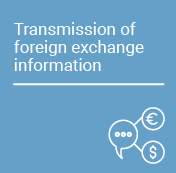Notes for the banking convention remarks
These documents are of an informative and academic nature. Opinions and possible errors are the sole responsibility of the author(s) and their contents are not binding on Banco de la República or its Board of Directors.
Cartagena, June 4, 2025
I would like to begin by expressing my gratitude for this opportunity to take part in this event, and extend a very special greeting to Mr. Jonathan Malagón, president of Asobancaria, Mr. Javier Suárez, chairman of its Board of Directors, all the members of the Association, the Financial Superintendent, Professor César Ferrari, and all those present at this convention.
Turbulent times
- Exactly one year ago, I began my remarks at this same event by noting that, like most countries around the world, Colombia’s monetary policy had experienced particularly turbulent periods in recent years.
- At the time, that statement was entirely accurate. We had just emerged from the global recession triggered by the 2020 pandemic and experienced a remarkably rapid recovery, one that brought about apparent excess demand and mounting inflationary pressures. These pressures intensified further in 2022 with the sharp rise in grain and agricultural input prices following Russia’s invasion of Ukraine.
- These developments pushed global interest rates up dramatically from their historically low levels seen in 2020, coupled with negative policy rates in several of the leading advanced economies, to the highest levels observed in over four decades by 2023.
- As if that were not enough, Colombia has also faced a substantial shift in public debt levels and the ratings assigned to this debt by the leading credit rating agencies. This has been accompanied by a pronounced deterioration in country risk indicators, both in absolute terms and relative to our regional peers. For example, the country risk premium on Colombian debt, as measured by Credit Default Swaps (CDS), relocated from among the lowest to among the highest in Latin America in just four years.
- By the time of the June 2024 Banking Convention, signs suggested that the global economy was achieving a soft landing. Inflation in advanced economies and many emerging markets was converging toward central bank targets, and economic activity was stabilizing, particularly in the United States, where unemployment had fallen to historic lows below 4%.
- However, the anticipation of a return to calmer times proved short-lived. Beginning in late 2024 and more markedly from April 2025 onward, we witnessed a dramatic and unexpected shift in U.S. trade policy. This included unprecedented tariff increases on global imports and a unilateral withdrawal from all existing free trade agreements, even those with long-standing allies.
- If uncertainty had been a defining feature of the past five years, the levels we are experiencing today far exceed anything we could have anticipated.
The role of central banks and monetary policy
- What role do central banks play in this environment of heightened uncertainty, and how has Banco de la República responded in particular?
- Central banks in countries like Colombia cannot eliminate uncertainty related to variables beyond their control, such as global economic conditions or domestic fiscal policy decisions, which fall under the authority of the National Government and Congress. However, what central banks can and must do is provide transparent and credible signals about the medium- and long-term inflation outlook. In doing so, they help mitigate the effects of volatility in conditions that lie outside the scope of monetary policy.
- In Colombia, as in many other countries, I believe that the inflation targeting framework we adopted more than twenty-five years ago remains a highly effective and powerful strategy. It enables us to respond to changing conditions while providing an anchor for the economy and a relatively straightforward rule for conducting monetary policy.
- Broadly, and perhaps in simplified terms, the inflation targeting strategy can be described as follows: when the inflation outlook exceeds the established target, monetary policy should be contractionary, characterized by relatively high policy interest rates. This situation typically arises when demand for goods and services outpaces the economy’s productive capacity. As a result, contractionary policy generally acts countercyclically, helping to stabilize both demand and output around their potential levels.
- Conversely, when inflation expectations fall below the target, monetary policy should be expansionary, aimed at stimulating demand for goods and services, as we saw during the 2020 pandemic. One of the strengths of the inflation-targeting strategy is its simplicity, which also extends to the primary monetary policy instrument: the benchmark rate. This is the short-term rate at which the central bank provides liquidity to the financial system when needed.
- A key feature of this strategy is that the central bank - in our case Banco de la República - does not attempt to manage or control the exchange rate. Exchange rates can be influenced by factors entirely unrelated to domestic conditions. For instance, in the first half of this year, global dynamics led to the U.S. dollar depreciating by approximately 9% against the euro. This was reflected in the Colombian peso's appreciation relative to the US dollar, even though the peso simultaneously depreciated against the euro and other currencies. While exchange rate movements can certainly impact inflation expectations and other critical economic variables, and are therefore relevant to our monetary policy decisions, Banco de la República does not target specific exchange rate levels. These rates may even move in opposite directions depending on the foreign currency in question.
- A similar dynamic applies to long-term interest rates, which often behave differently from the central bank’s short-term policy rate. This divergence was evident over the past year, when Banco de la República significantly lowered its policy rate, yet ten-year TES bond rates increased by over 1.5 percentage points. This rise was driven by changes in international financial conditions and a heightened perception of risk surrounding Colombia’s public debt.
- Under the inflation targeting framework, Banco de la República cannot eliminate the uncertainty caused by external and fiscal variables. However, it can contribute to economic stability by delivering a clear and credible message about the medium- and long-term inflation outlook. This, in turn, helps stabilize demand and output around their potential levels, an objective that aligns closely with the core mandate assigned to Banco de la República by the 1991 Constitution.
Colombia: a relatively successful macroeconomic adjustment process
- How has the inflation targeting strategy worked in Colombia in recent years?
I would argue that, considering the high degree of volatility in the environment, this strategy has been relatively successful. Unfortunately, it has not been entirely successful due to several factors that have slowed and complicated the convergence of inflation toward the target, making this process more difficult in Colombia than in other countries that apply the same policy framework. - Let me begin by emphasizing that the persistence of observed and expected inflation above target has led us, in recent years, to maintain a restrictive monetary policy stance, with benchmark rates above what could be considered neutral or desirable in the medium- and long-term. This approach is consistent with the inflation-targeting strategy and has proven effective, given that inflation has declined by more than eight percentage points from a peak of 13.4% in the first quarter of 2023 to its current level of 5.16%.
- Thanks to this policy, the pronounced excess in domestic demand that we faced three years ago has been significantly corrected. At the time, this excess demand was reflected in a current account deficit exceeding 6% of GDP by 2022. That figure fell to just 1.8% of GDP in 2024. Although the deficit is expected to increase in 2025 due to lower oil prices and a partial recovery in domestic demand, it will likely remain at less than half of what it was three years ago. This makes the Colombian economy less reliant on external financing and less vulnerable to abrupt shifts in domestic and international conditions, a significant achievement in the current global context.
- Equally notable is the clear recovery in economic activity. Growth for 2025 is projected at 2.6%, well above the figures for the two previous years (0.7% and 1.7%, respectively), and compares favorably both with expectations for many Latin American countries and with the 2% average estimated by the IMF for the region. Colombia’s GDP growth in the first quarter of this year, which reached 2.7%, along with other high-frequency indicators of recent economic activity, further reinforces this sense of optimism.
- Of course, this recovery has been uneven. While sectors such as agriculture, retail, and entertainment are showing exceptional dynamism, others, particularly manufacturing, mining, and construction, continue to show low levels of activity and negative growth rates. Fixed capital investment also remained stagnant in the first quarter, holding at already depressed levels. Several hypotheses have been proposed to explain these weak results, including issues related to sector-specific policies and significant uncertainty regarding the future of such policies and business incentives. Nevertheless, it is essential to note that domestic demand has demonstrated a consistently positive momentum. According to figures published by DANE, domestic demand grew by 4.4% in the last quarter of 2024 and by 4.7% in the first quarter of 2025, both in real terms.
- This growth in demand and productive activity is also reflected in the labor market. Employment increased by over 3% in the past year, and the unemployment rate in April was 8.8%, the lowest for that month in many years. However, it is essential to note that this improvement is due mainly to an increase in self-employment, rather than in wage or salaried employment.
- Undoubtedly, the gradual reduction in the policy interest rate initiated by the Board of Directors of Banco de la República since December 2023, made possible by a significantly lower inflation environment, has played an important role in supporting this recovery in domestic demand, economic activity, and employment.
Why haven’t interest rates fallen further?
- I believe it is wise to reiterate that, although policy interest rates have fallen substantially, from 13.25% in December 2023 to 9.25% at present, they still remain at levels consistent with a contractionary monetary policy. Both nominal and real interest rates are above what the Bank’s technical staff considers neutral or desirable in the medium and long term, when inflation has converged to its 3% target and the economy is growing at a rate close to its potential.
- The primary reason for maintaining these relatively high rates is that inflation remains above the target. While we have made substantial progress in reducing it from its peak in March 2023, the decline has been slower than expected and also slower than in many other countries in the region and around the world, where inflation is already within the target ranges defined as acceptable by their respective central banks.
- This resistance to a faster decline in inflation in Colombia is largely due to the high levels of price and wage indexation present in our economy, along with other idiosyncratic and cyclical factors that have made the adjustment process more difficult. For instance, the minimum wage and transportation subsidies paid by employers increased by 11% this year, eight percentage points above the inflation target, making it more challenging to meet that target in 2025.
- In fact, since November 2024, the downward momentum in inflation has lost strength. Over the last six months, inflation has hovered in a narrow range between 5.1% and 5.3%, without a clear downward trend. Core inflation (excluding food and regulated items) continued to decrease during this period, falling from 5.4% in November to 4.8% in March. However, this trend reversed slightly in April, with inflation rising to 4.9%, driven by increases in non-regulated service sectors.
- This slowdown in the disinflation process since last November has heightened concerns about the pace of convergence toward the inflation target. It is also reflected in a notable increase in inflation expectations for the end of 2025, as reported in analyst surveys. These expectations now stand at around 4.8%, compared to approximately 3.7% in October of last year.
- Furthermore, international interest rates relevant to Colombia’s external financing have also increased. This is partly due to rising long-term rates in global financial markets, driven by heightened global uncertainty, and partly due to the increase in Colombia’s country risk premiums, following news that the fiscal deficit has widened far more than expected. Moreover, public debt as a share of GDP is rising at a pace that exceeds what is consistent with macroeconomic stability.
- These factors help explain a paradoxical and often misunderstood phenomenon: the yield on long-term TES securities, which determines the government’s financing costs, has risen significantly over the past year by as much as 1.5 percentage points for 10-year bonds. This has not resulted from an increase in Banco de la República’s policy interest rate; on the contrary, as previously noted, that rate has fallen substantially.
- When we compare Colombia with other Latin American countries that follow an inflation targeting strategy, we see that countries such as Peru, Uruguay, Paraguay, and Costa Rica have been able to reduce their policy interest rates more aggressively, as inflation in those economies is already within the target ranges set by their central banks. In Chile, inflation remains slightly above target, mainly due to the behavior of public utility rates, but expectations point to inflation converging to the 3% target by the end of 2025.
- The experiences of the region’s two largest economies are especially relevant as benchmarks for us.
- In Mexico, the central bank recently lowered its policy interest rate to 8.5%, considering the prospect of a sharp economic slowdown, or even a recession, due to the powerful impact of U.S. tariff policy on that country. It is worth noting, however, that this monetary policy move was facilitated by the fact that Mexico’s inflation rate is significantly lower than Colombia’s, at 4.2%. In fact, Mexico’s ex post real interest rate (i.e., the difference between the nominal rate and observed inflation) remains slightly higher than Colombia’s.
- Brazil presents a particularly striking case. Inflation there currently stands at 5.5%, slightly above Colombia’s rate. The Central Bank of Brazil had been making significant progress in lowering its policy interest rate, from 13.75% in August 2023 to 10.5% by mid-2024. However, in the second half of 2024, growing concern over the Brazilian government’s fiscal situation led to a sharp depreciation of the real exchange rate, a rise in inflation expectations, and a subsequent reversal in monetary policy. The central bank was forced to raise the policy rate rapidly, from 10.5% to its current level of 14.75%. In ex post real terms, this rate is more than five percentage points higher than Colombia’s. Fortunately, Colombia has not faced such a situation in recent times, and clearly we would not want to encounter it in the future either.
- In Colombia, the technical staff’s central scenario projection for the end of 2025 anticipates a continued decline in inflation. However, inflation is still expected to remain above the tolerance range of ±1 percentage point around the 3% target set by the Board last November. At that time, we believed it was both feasible and likely that inflation would fall within that range by 2025. Yet, developments beyond the Bank’s control, such as the increase in the minimum wage and the widening of the fiscal deficit, which in turn has driven a considerable rise in Colombia’s country risk premium, have made achieving that target significantly more difficult. These developments have compelled us to maintain a policy interest rate that, while it has continued to decrease, is clearly higher than what both the market and we had expected six months ago.
- Looking ahead, uncertainty remains high, driven by both domestic and international factors. Future monetary policy decisions will depend on the evolution of many variables, each of which must be assessed as new information becomes available. What I can say with confidence is that, under our current inflation-targeting framework, policy decisions will continue to be made cautiously to ensure that inflation converges toward the target. I am personally convinced that this strategy remains the most appropriate path for fostering sustainable economic growth over the long term.
Financial system results
- Over the next few days, within the framework of this Banking Convention, numerous analyses of the current situation and outlook for financial institutions will be presented, starting with the one that Superintendent of Finance, Professor César Ferrari, is likely to deliver shortly. I will not delve into sector-specific issues, but I would like to leave you with two general messages.
- The first concerns the soundness and outlook of the financial system. Like many other sectors, the financial sector has borne a significant cost during the recent years' adjustment process. Restrictive monetary policy led to a sharp increase in funding costs and interest rates on loans to customers, particularly in 2023. Combined with the slowdown in economic growth, this resulted in a marked deterioration of portfolio-at-risk and non-performing loan indicators, driving up provisioning expenses and loan write-offs. Consequently, a considerable number of financial intermediaries recorded substantial losses.
- Nonetheless, it is very encouraging that the credit institutions system as a whole continued to generate positive returns. Even those institutions that posted losses consistently maintained solvency ratios well above the regulatory minimums. After what was undoubtedly an arduous and painful adjustment process, the financial system remains fundamentally sound and well-positioned to resume a path of healthy, sustainable growth, something that is already becoming evident in recent data.
- Indeed, the number of institutions reporting losses has been falling significantly, in line with improving conditions. Non-performing loan indicators and provisioning expenses are trending downward, and the pace of loan portfolio growth is accelerating. All available signs suggest that the most difficult and painful phase of the adjustment process is now behind us.
Bre-B
- The second message I would like to convey relates to the rapid progress we are making toward the launch of our fully interoperable instant payment system, Bre-B.
- As you know, in October 2023, less than two years ago, we published the regulation on the interoperability of instant transfers. Since then, we have worked closely with the financial industry to define the technical and operational standards necessary to enable all system users to send and receive money between accounts at any institution securely, at any time, in real-time, and with a simple, unified user experience.
- In line with our schedule, I am pleased to announce that the first component of the instant payment ecosystem will be available in mid-July. This is the Centralized Directory, a repository that stores the keys each user associates with their account, through which they will receive funds via Bre-B.
- The preparation process for launching Bre-B’s Centralized Directory led several entities to conduct pilot programs to fine-tune their procedures and familiarize customers with the key system. Based on this market evolution and in seeking to provide a smoother user experience, we recently updated the regulation to incorporate processes that capitalize on insights from these pilot efforts.
- Staying on track with our timeline, which has been adhered to in an exemplary manner, payments and transfers through Bre-B will be enabled in the third week of September 2025. As discussed in various technical working groups, each institution is expected to inform its users about the steps required to access this new service.
- The introduction of Bre-B represents a significant boost to ongoing efforts to digitize payments and financial services more broadly. It lays the groundwork for continued innovation in transaction infrastructure, while promoting financial inclusion, economic competitiveness, and user satisfaction.
- I would like to take this opportunity to recognize and thank the team at Banco de la República leading this initiative, as well as the National Government and all private sector stakeholders involved. I also extend my appreciation to the various international organizations that have contributed greatly to this effort through their support. This ambitious project is a clear example of what can be achieved when the public and private sectors collaborate toward a shared goal, leveraging international best practices to benefit the general population. I invite everyone to continue this collaborative work to ensure the scalability of the ecosystem by adding new functionalities and use cases, such as recurring payments and collections, so that Bre-B can support the vast majority of everyday transactions and achieve broad-based adoption.
Contributory Pillar Savings Fund
- I cannot conclude this speech without at least briefly addressing the Contributory Pillar Savings Fund, which, under the pension reform enacted by Law 2381 of 2024, is to be administered by Banco de la República starting July 1.
- Last Thursday, May 29, the national government issued Decree 0574, which regulates several key aspects we had been expecting for months, regulations essential to advancing preparations for the Fund’s operation. I would like to thank the URF and the Ministry of Finance for their efforts and their openness to the Bank's comments on earlier drafts.
- The challenge ahead is substantial. We must still finalize the signing of an inter-administrative contract between the government and Banco de la República, which will allow us to begin selecting and hiring the portfolio managers for the resources the Bank is expected to receive starting in July, less than a month from now.
- I want to reaffirm the Bank’s commitment, expressed since the Law’s enactment over a year ago, to work swiftly, collaboratively, and in coordination with all relevant parties. That said, the Bank’s ability to meet its legal responsibilities on time will also depend on the pace at which several preliminary steps are completed, many of which fall outside our direct control.
Thank you once again to Asobancaria for the opportunity to participate in this opening session. I wish you productive deliberations in the days ahead. As always, I trust they will yield valuable contributions to the financial sector, the economy, and the country as a whole.





































































